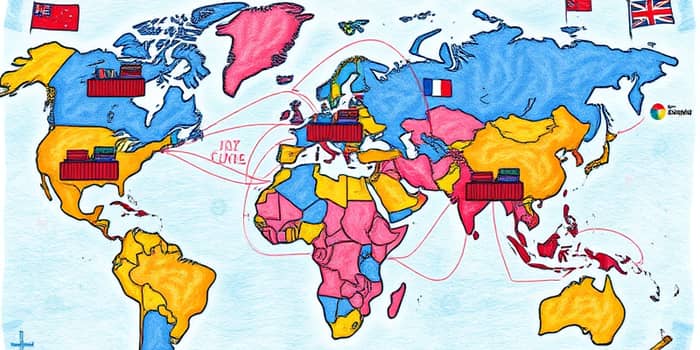
In an era marked by shifting alliances and deepening rivalries, investors face unprecedented challenges as trade policies transform under geopolitical pressures. From escalating tariffs to the emergence of competing blocs, the investment landscape has become a complex puzzle requiring nuanced understanding and agile strategies.
Global merchandise trade is at a crossroads. According to recent forecasts, global merchandise trade is expected to decline by 0.2% in 2025. North American exports are projected to fall sharply, with a steep 12.6% drop in exports anticipated due to looming reciprocal tariffs and policy uncertainty. If tensions intensify, merchandise trade could contract by as much as 1.5%, amplifying risks for businesses that rely on cross-border supply chains.
The World Bank and UNCTAD both warn that 2025 will mark the weakest run for global growth since 2008, excluding full-blown recessions. With World Bank forecasts global growth at 2.3%, economies representing 70% of global output will grapple with the fallout of policy unpredictability. Heightened economic policy uncertainty now surpasses levels recorded during the 2008 crisis and the COVID-19 pandemic, underscoring the severity of today’s environment.
Trade is no longer a domain governed solely by comparative advantage. Strategic calculations—spanning security, sovereignty, and supply chain resilience—are reshaping partnerships. Observers identify the formation of two broad geopolitical blocs, with nations aligning their trade policies based on political allegiances rather than purely economic rationale.
This shift means that trade instruments serve non-trade objectives such as climate action, human rights advocacy, and national security. As a result, investment flows are redirecting toward trusted partners, and companies are compelled to justify every aspect of their cross-border engagements against a backdrop of geopolitical scrutiny.
The US tariff wars of 2025 delivered a stark reminder of how abruptly markets can react. New levies targeting Canada, China, and Mexico sparked retaliatory measures, pushing some Chinese goods tariffs above 145% before a partial rollback to 30%. Financial markets responded with immediate volatility: the US dollar weakened sharply, and the CBOE Volatility Index—often dubbed the “fear index”—soared to its third-highest reading on record.
These flashpoints illustrate the potential for trade disputes to morph into broader economic shocks, reinforcing the importance of resilient investment frameworks that can absorb sudden policy shifts.
In response to growing geopolitical risk, investors are recalibrating their approaches. Business confidence has weakened, prompting delays in major capital expenditures and thorough reexaminations of supply chain dependencies. Leading firms are embracing friendshoring and de-risking strategies, pivoting toward allied nations and diversifying away from volatile jurisdictions.
Risk management is now at the forefront of investment decision-making. Portfolios with broad geographic and sectoral diversification historically withstand shocks better than concentrated bets. Many investors are increasing allocations to defensive assets, including gold and oil, and adopting hedging instruments to cushion against currency and commodity swings.
The degree of exposure to trade tensions varies markedly by region and industry. A closer look at the data paints a vivid picture of winners and losers in this evolving landscape:
Energy, food security, and critical minerals stand out as sectors under intense pressure due to conflicts and geopolitical maneuvering in Ukraine, the Middle East, and the Asia-Pacific. Meanwhile, the BRICS+ alliance gains clout in resource control yet lacks a unified currency, affirming the USD’s enduring dominance.
Multilateral institutions such as the WTO, IMF, and World Bank caution that prolonged trade uncertainty poses a significant drag on global growth. Without concerted efforts to stabilize trade rules and reduce policy volatility, the global economy risks enduring the slowest growth trajectory since the mid-20th century.
To navigate this turbulent terrain, policymakers and investors alike should consider the following:
By fostering an environment of stability and collaboration, the global community can mitigate the most severe consequences of trade fragmentation and safeguard investment flows that underpin growth and innovation.
In conclusion, the intersection of geopolitics and trade is redefining investment decisions worldwide. While uncertainties abound, proactive strategies—grounded in diversification, risk management, and policy engagement—offer a pathway to sustainable returns. As the world adjusts to new alliances and trade paradigms, those who anticipate shifts and adapt swiftly will be best positioned to thrive in the next era of global commerce.
References













